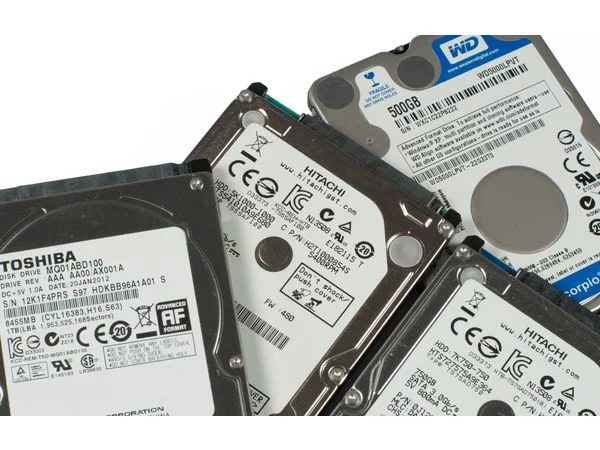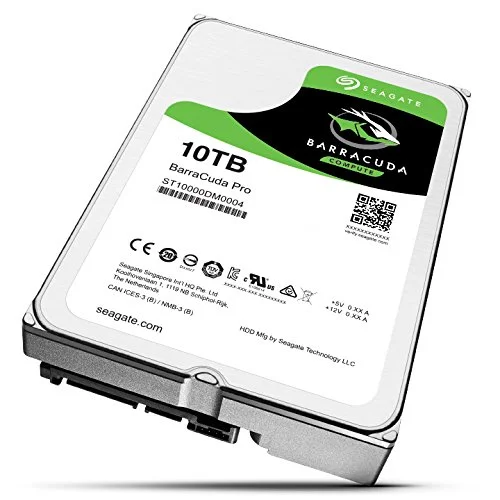Even for the casual computer user shopping for a hard drive is not such a difficult task. Often there seems to be a greater emphasis put on storage capacity, less emphasis on performance and features. The overall mindset is if a hard drive has enough space to accommodate all of my applications and family photos, no worries needed. Plop down the cash, purchase made.
Easy right? But before you go on purchase a new drive, there are some things you should consider, such as warranty, speed capability, and much more. Like any piece of hardware, if you're shopping for a new drive it I recommend that you carefully do your research before you make that eventual purchase. Whether you're considering buying an SSD or the traditional 3.5-inch drive, there are limitless brands to choose from, Seagate, Western Digital, Samsung, to name a few.
As best I can I drew up a precise guideline you should follow if you plan on buying a new drive, read on.
Begin the process of choosing a hard drive
So many hard drives to choose from
As I stated in a couple a paragraphs above, there are several brands to choose from, for the SSD (solid state drive) my choice has always been SanDisk SSD-Plus, for the 3.5-drive my top pick is the Seagate Barracuda. Both these drives are reliable, perform well and thus far either have not failed me during operation. But those are my choices, the market is heavily saturated; there is a bevy of drives to choose from, pick the brand you think best fit your system.
So many SSD's to choose from
Whether or not you judge branded hard drives based entirely on speed, performance, and storage capacity, the difference between each brand is very slim. Often manufacturers may offer one or two features that may affect the price point.
Make the correct Interface choice
Observe the back of this hard drive, this is an actual SATA interface
Hard drives are available in two types of storage interfaces, PATA (parallel AT- attachment) and SATA ( Serial Advanced Technology Attachment), with the latter having a much faster data transfer and reduced size cables. PATA is a much older storage interface, there's a good chance that you won't find such technology exist in even a ten-year-old computer, so my suggestion is to go with the SATA interface because its the only choice you should make. But for the interested curious minds, PATA interfaced hard drives are a bit different in appearance, the actual data and power connectors are much longer. On the other hand, SATA power and data connectors are much smaller. Regarding performance, SATA interfaces have a faster seek time, a larger buffer, and support a SATA-only feature known as NCQ, which is an acronym for Native Command Queuing. This SATA protocol allows hard drives to optimize the order in which read and write commands can be executed.
The unimportance of storage capacity
Lots of Gigs of space means endless amount of porn stored? Really?
When it comes to storage capacities, it makes sense to advise readers to buy hard drives according to need, how much storage space you think you might use, but that would be bad advice on my part, as you can never have enough storage space. Especially when you have operating systems, video and audio files, various applications, photos, and even useless junk files consume a great deal of hard drive space. Ultimately, you have to decide the amount of storage needed and what you are willing to pay. The best advice I can give is to choose a model based on cost per gigabyte; this will determine the best return on your investment.
Purchase a drive with plenty of cache
Cache is primarily embedded memory within your hard drive; it acts as a buffer between the rest of your computer and physical storage drive. Most modern hard drives, the 3.5 desktop variant on average will come with 64MB cache, while solid-state drives have 4GB memory cache. Hard drives that have storage capacities exceeding well past 1TB will usually have a large memory cache, this, of course, will affect price point. Memory cache along with storage capacity is one of the main features listed on your hard drives spec sheet. With that said, drives with a larger cache does enhance system performance and speed.
Pay close attention to power consumption
Take a wild guess, which one consumes more power?
The 3.5-inch desktop hard drives that's on the market vary when it comes to power consumption and noise level due to internal integral moving parts inside that consist of the actuator stepper motor, the central spindle, the spinning disk, all give off some form of heat signature. SSD's, on the other hand, have no moving parts at all, thus producing low levels of heat and power consumption. It's probably the reason why solid state drives have primarily replaced the 3.5-inch hard drive as the primary boot drive. Aside from being much faster, they also run quietly
It won't hurt to check the shock rating
Not sure this is what happens when you drop a hard drive but I needed to use a scary example, so here you go
The hard drive shock rating more than likely won't impact your decision making, but it's certainly good to know what you're getting in value. In case you're curious, hard drives are measured accordingly to gravity (G), this is the level of shock drives can withstand while in operation and non-operation. Rarely do desktop computers go through a series of sudden shocks or drops, that is, of course, you continually move it from one location to the next. The preferred location is the desktop or the floor. Now if you're holding a hard drive in your hands, you stand the chance of accidentally dropping it if you're not careful. With that said, most drives today are structurally sound and incredibly resistant to any damages or drops.








